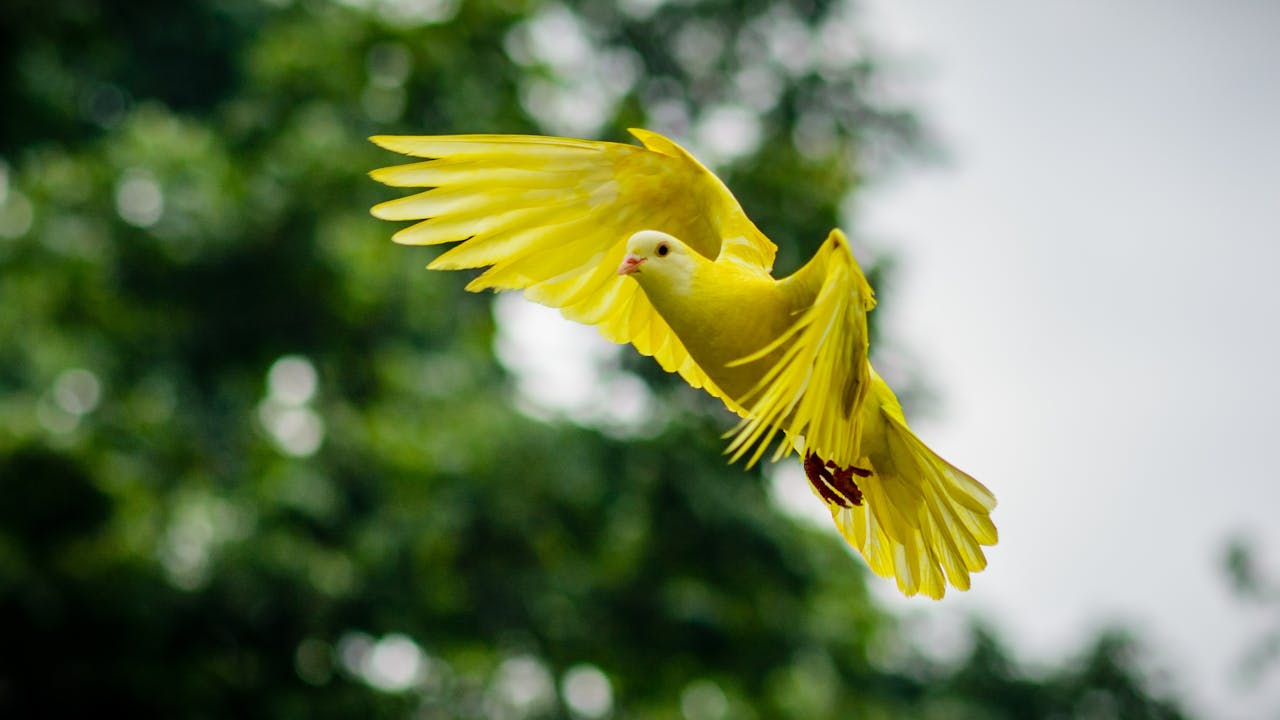Birds’ ability to fly is a remarkable feat, made possible by their wings’ intricate movements. While all birds flap their wings to stay airborne, some species push the limits of wing speed. This article explores the fascinating world of avian wing movements, diving deep into the bird with the fastest wing beat frequency.
Understanding Bird Wing Movements
Birds employ three primary techniques: flapping, gliding, and hovering. Flapping propels them through the air while gliding conserves energy by riding air currents. Hovering, a specialized skill, involves rapidly flapping wings to remain stationary.
Several factors influence a bird’s wing movements. Aerodynamic wing shapes and body sizes play a crucial role. Smaller birds generally have higher wing beat frequencies due to their lighter weight and enhanced maneuverability. Muscle strength and endurance also contribute, enabling some species to sustain rapid wing beats for extended periods.
Top Contenders for Fastest Wing Movement
Among the avian world’s speedsters, a few groups stand out. Hummingbirds, with their unique hovering abilities, boast impressive wing beat rates. Swifts and swallows, aerial acrobats known for their agility, also rank highly. Even formidable raptors like falcons and hawks exhibit remarkable wing movements during hunting dives and attacks.
Hummingbirds
These tiny marvels are true champions of wing speed. Their ability to hover and even fly backward necessitates rapid wing beats. Most hummingbird species achieve wing beat frequencies between 50 and 80 beats per second. This incredible rate creates the characteristic humming sound that gives them their name.
Swifts and Swallows
Known for their graceful aerial maneuvers, swifts and swallows possess exceptional wing control. Their slender bodies and long, curved wings enable high speeds and tight turns. While not as rapid as hummingbirds, their wing beat rates can reach up to 25 beats per second during flight.
Falcons and Hawks
These powerful raptors may not seem like wing-speed contenders, but their hunting techniques suggest otherwise. During dives and attacks, peregrine falcons can achieve wing beat frequencies of up to 20 beats per second, propelling them at incredible speeds to catch their prey.
The Fastest Wing Movement: The Amethyst Woodstar
Among all bird species, one stands out as the undisputed king of wing speed: the Amethyst Woodstar. This tiny hummingbird, native to western South America, holds the record for the fastest wing beat frequency ever recorded.
About the Amethyst Woodstar
The Amethyst Woodstar is a captivating little bird, measuring around 5.5 cm (2.2 inches) in length and weighing a mere 2.4 grams (0.085 ounces). Despite its diminutive size, this hummingbird packs an extraordinary punch with its wing movements.
The Record-Breaking Wing Movement
In a remarkable feat, the Amethyst Woodstar has been clocked at an astonishing 80 wing beats per second! This mind-boggling rate surpasses even its hummingbird cousins, making it the fastest wing movement recorded in any bird species.
To put this in perspective, imagine a human attempting to move their arms back and forth 80 times in a single second. It seems physically impossible, yet the Amethyst Woodstar achieves this incredible speed with its delicate wings.
Adaptations and Evolutionary Advantages
So, how does this tiny bird accomplish such a remarkable feat? The answer lies in its specialized adaptations and evolutionary advantages.
The Amethyst Woodstar’s aerodynamic body shape and slender wings reduce air resistance, enabling efficient and rapid wing movements. Its powerful chest muscles, finely tuned for quick contractions, provide the necessary force to propel its wings at breakneck speeds.
This exceptional wing speed offers several ecological benefits. It allows the Amethyst Woodstar to hover with precision, enabling efficient nectar extraction from flowers. Additionally, rapid wing beats help the bird evade predators and outmaneuver competitors during territorial disputes.
Other Birds with Impressive Wing Movements
While the Amethyst Woodstar reigns supreme in wing speed, several other bird species deserve recognition for their remarkable wing movements.
Peregrine Falcon
Known as the fastest animal on the planet, the peregrine falcon can reach speeds up to 320 km/h (200 mph) during hunting dives. This incredible velocity is achieved through a combination of aerodynamic body shape and powerful wing beats, allowing the falcon to deliver a devastating blow to its prey.
Ruby-Throated Hummingbird
One of the smallest hummingbird species found in North America, the Ruby-Throated Hummingbird is a contender for rapid wing movements. These tiny gems can flap their wings up to 53 times per second, enabling them to hover effortlessly while feeding on nectar.
White-Throated Needletail Swift
Renowned for its aerial prowess, the White-Throated Needletail Swift is a marvel of avian agility. These birds can achieve wing beat frequencies of up to 30 beats per second, allowing them to perform incredible maneuvers and navigate through tight spaces with ease.
Concluding Thoughts
The world of bird wing movements is truly fascinating, showcasing nature’s incredible engineering and adaptations. From the record-breaking Amethyst Woodstar to the agile swifts and powerful raptors, each species demonstrates unique strategies for mastering the skies.
Studying these wing movements not only satisfies our curiosity but also holds practical implications. Understanding avian aerodynamics could inspire innovative designs in fields like aviation and robotics, where efficiency and maneuverability are paramount.



